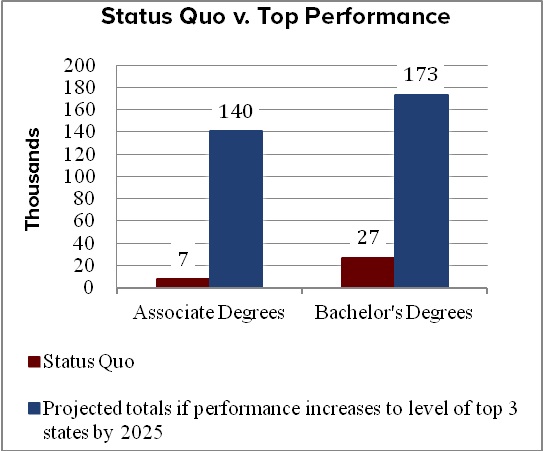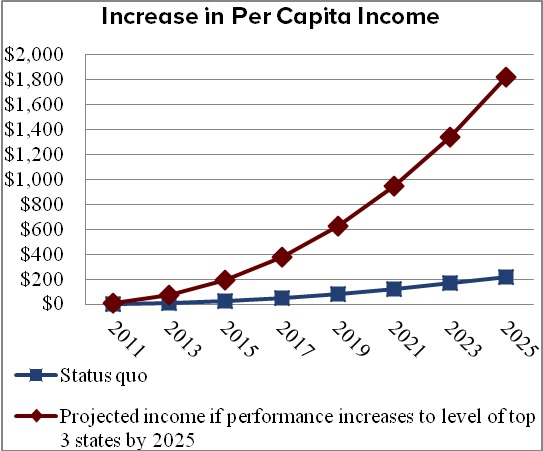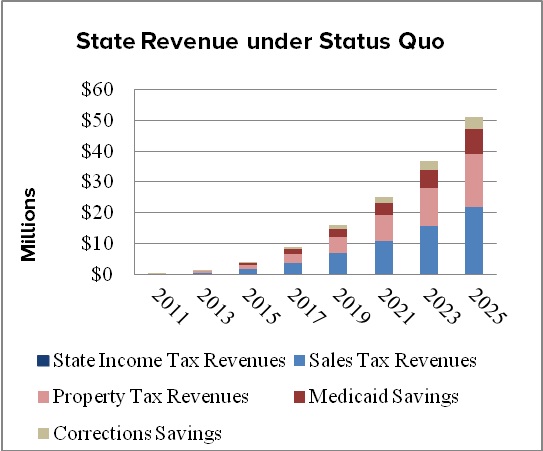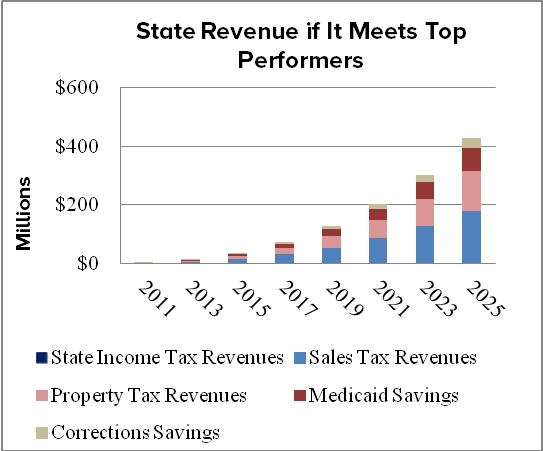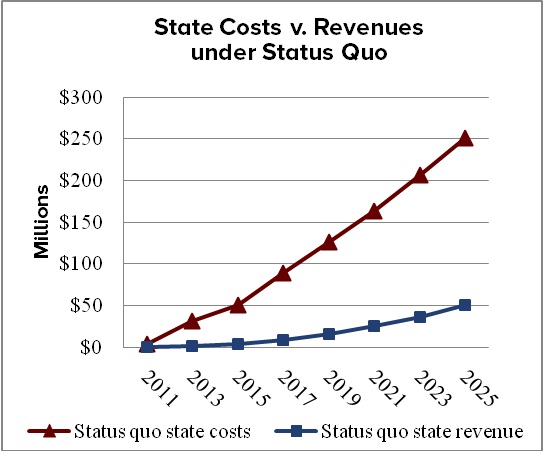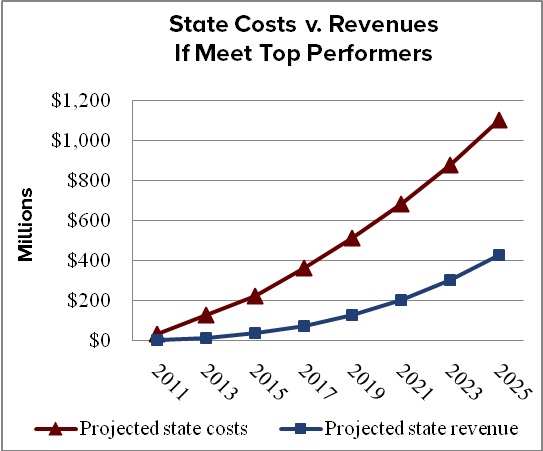Nevada: The Return on Investment to Increasing Postsecondary Credential Attainment
Visit the Nevada Return on Investment dashboard tool >>
(NOTE: Dashboard takes a few seconds to load)
|
Nevada Must Improve College Participation and Credential Attainment Rates to Remain Competitive |
|
|
|
|
Meeting Top Performers Produces Significant Personal Economic Return |
|
|
Per capita income increases when the state meets top performers
|
|
|
Meeting Top Performance Produces Significant Economic Returns to the State |
|
|
Status quo produces small returns Under current postsecondary investment patterns, Nevada’s
|
Meeting top performance pays off By meeting top performance, Nevada will generate more annual revenue, topping approximately $425 million in 2025.
|
|
Revenues and Costs Increase When Meet Top Performing States |
|
|
Status Quo: Costs exceed revenues Under current postsecondary investment patterns, Nevada’s postsecondary costs exceed state revenues by about $200
|
Meet top performance: Revenues exceed costs By matching top performing states, costs and revenues go up. Revenues are below costs primarily because Nevada lacks a state income tax (unlike most states).
|
|
This analysis was prepared using the CLASP-NCHEMS Return on Investment Dashboard tool. See clasp2022.tealmedia.dev/ROIdashboard |
|
